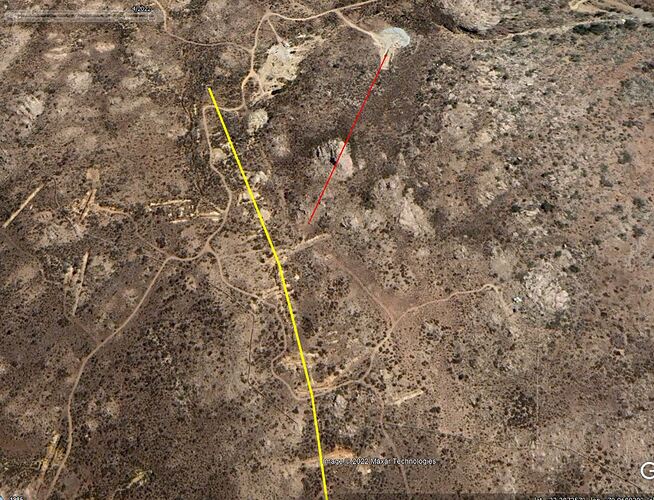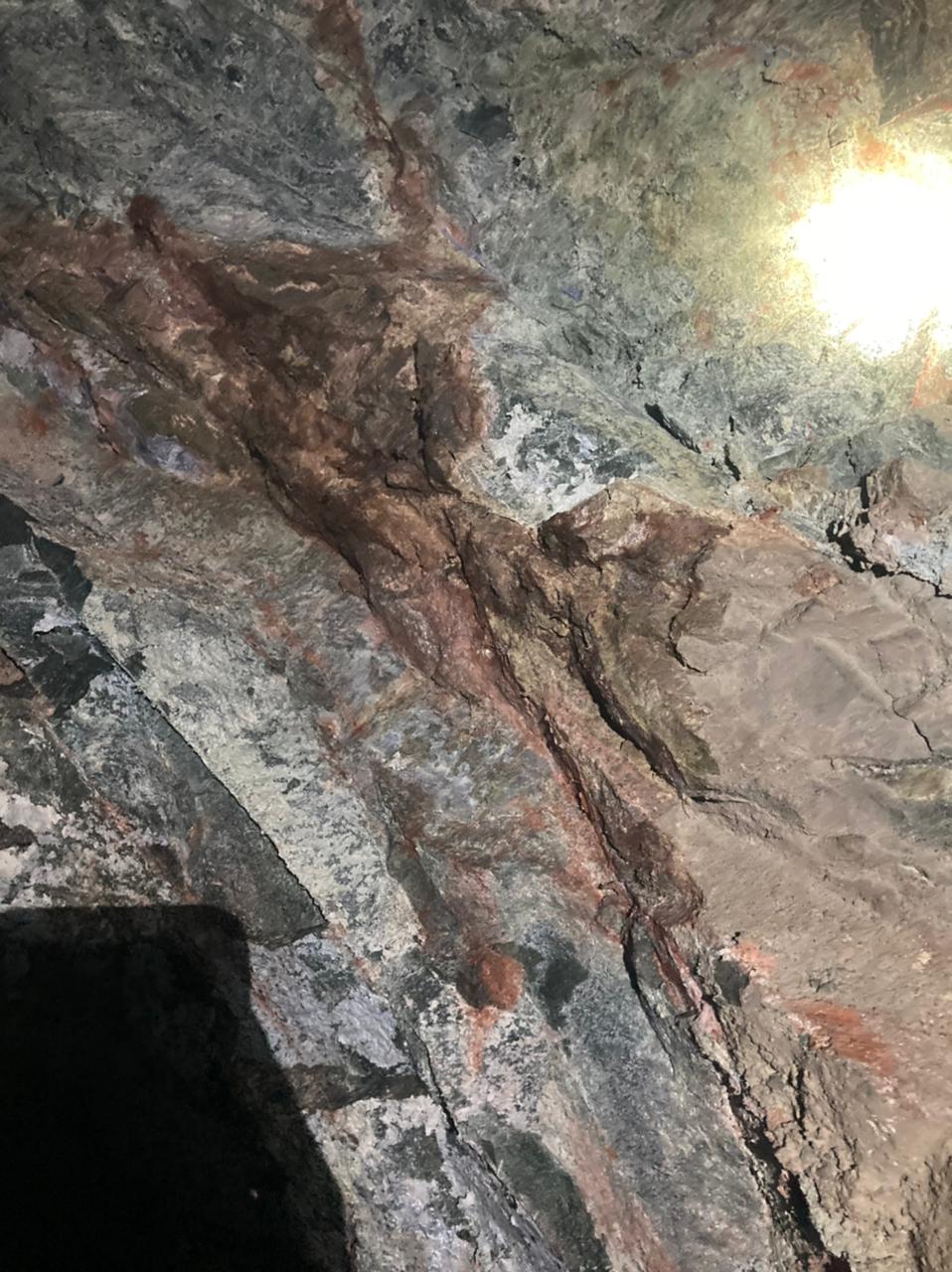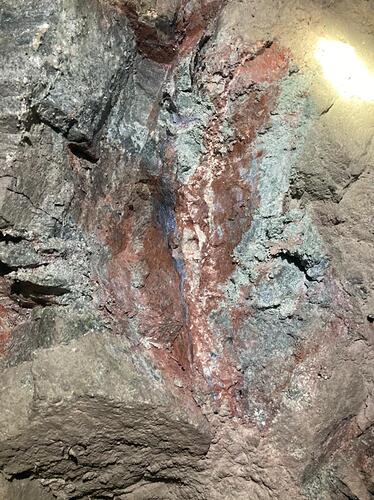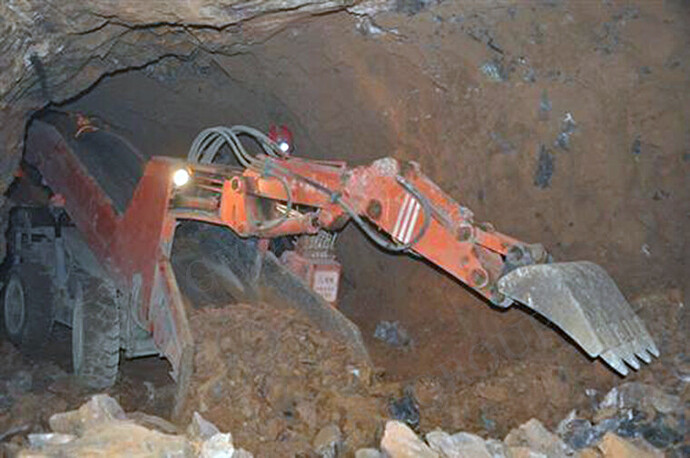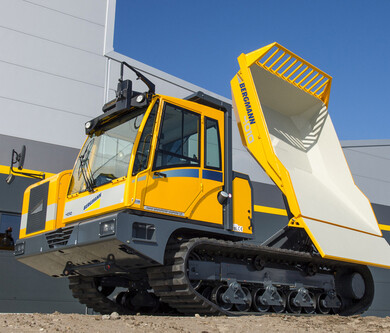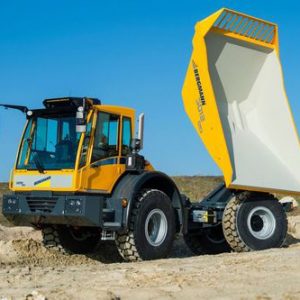SO, THEY INTERSECTED THE DL1 VEIN FINALLY. WHAT’S THE BIG DEAL?
THE DL1 VEIN SHOWED VERY HIGH GRADES OVER 30 YEARS OF PRODUCTION, EVEN UP NEAR THE SURFACE
Let’s start with what exactly got intersected and at what depth level it got intersected? They successfully intersected a mesothermal vein that averaged 64 gpt gold grades over 30 years of production. THIS EXTREMELY HIGH-GRADE PRODUCTION CAME FROM THE SURFACE LEVELS ABOVE WHERE THE HIGHER-GRADE ORE TENDS TO RESIDE IN THESE HYDROTHERMAL SYSTEMS. The recent intersection of the Antonino Adit and the DL1 Vein occurred at about 80 meters below the plateau level and 10 meters below the level where stellar gold grades were recently announced from a 16-sample program conducted at the intersection of Level 2 and Shaft A. Management recently cited that both the widths and grades are becoming more favorable with depth.
THE INFRASTRUCTURE ALREADY PRESENT WILL PROVIDE THE MUCH-NEEDED VENTILATION SYSTEM NEEDED TO PROVIDE A SAFE WORKING ENVIRONMENT
The historical Fortuna Mine/DL1 Vein system already has in place 5 “chimneys/ventilation raises” as well as 6 shafts. The access to fresh air, which will be augmented with the ventilation system recently placed within the Antonino Adit, will allow the exhaust gases, blast residue and noxious gases associated with exploiting the vein at multiple sites simultaneously to be removed efficiently. The 30-meter long “chimney/ventilation raise” connecting the Antonino Adit to the DL1 Vein “old workings”/Fortuna Mine, will provide this fresh air source. (Auryn had already drifted the approximately 150-meter long “Larrissa Adit” on a ‘sister vein” (Merlin 1) of the DL1 Vein. SERNAGEOMIN has asked Auryn to complete 3 separate 140-meter tall “chimneys/ventilation raises” prior to putting it into production. Management opted to get the cash flowing out of the Fortuna Mine first and then go back to the Caren Mine/Larrissa Adit.)
A VEIN THAT EXTENDS TO SIGNIFICANT DEPTHS
This same DL1 Vein exits/outcrops on the southern downslope off of the plateau 700 METERS below the plateau surface. This represents significant GEOLOGICAL CONTINUITY. We don’t know how much deeper it goes below that outcropping. Mesothermal veins often extend to 1,000 to 1,500 meters in depth. They are much, much larger than their ”epithermal” counterparts but they are most famous for their high grades and widths improving with depth as well as their grade superiority to “epithermal” veins (Andrew Jackson of Sprott Securities). Most veins being mined worldwide are of the “epithermal” variety.
HARDLY A SURPRISE
None of this should be a surprise in that the ADL Mining District sits right in the middle of an Early Cretaceous Mesothermal Vein Belt that extends from the Curacavi Mining District, the ADL’s next-door neighbor to the south and the Colliguay Mining District, its next-door neighbor to the north (from “The Geology of Chile” by Theresa Moreno and Victor Maksaev). Auryn’s CEO, Maurizio, already acquired the Empressa Caballo Mine in Colliguay and tucked it into his “Masglas” private corporation which appears to function as a “prospect/project generator”.
PART OF A MESOTHERMAL “VEINS SYTEM” WITH OTHER IMPRESSIVE MEMBERS
Recall how the “sister mesothermal vein” of the DL1 to its west, known as the Merlin 1 Vein (Caren Mine and “Larrissa Adit”), extends all of the way across the plateau from south to north and then outcrops on the northern downslope off of the plateau at several places where adits have already been drifted and sampling revealed “bonanza” gold grades. There are about 6 main veins within this very well-established mesothermal “vein system”. Of the 6 main veins present at the ADL, the DL1 and Merlin1 Veins have had the most work done on them to date.
WHAT HISTORICAL GRADES WERE REALIZED IN THE AREAS MOST PROXIMATE TO THE UPCOMING MINING EFFORTS?
As noted, the most recent data we have regarding sample grades in this area came from 16 samples taken from the area of the intersection between level 2 (10-meters above the current level) and Shaft A along the vertical course of Shaft A. The averages, especially in the areas towards the bottom of that shaft, were well in excess of that 64 gpt figure average. I would guess that the next grades that will be ready for reporting will be from either the construction of the “gallery” or perhaps from the drifting of the new 30-meter long “chimney/ventilation raise” linking Level 2 to the Antonino Adit. This excavation will be made within the vein itself. Interestingly, the artisanal miners (“SMFL”) had no contribution from copper in calculating that 64 gpt gold average grade. There was also no visible gold present.
HOW ABOUT THE TIMING FOR THIS DISCOVERY AND SUCCESSFULLY GETTING IT INTO PRODUCTION?
Auryn appears to be going into high-grade gold and copper production at a time in which the price of both metals is at or near historical highs. Gold is trading at about $1,960 per ounce and copper was last at $4.68 per pound, up from $2 per pound in early 2020. Inflationary pressures have kept a bid under gold recently and there don’t appear to be any quick fixes for this. The worldwide move to “decarbonization” and the use of electrical vehicles (“EVs”) should keep the demand for copper robust for a long time to come. “EVs” use 10-times as much copper per car then do cars with internal combustion engines. When metals prices are breaking out to the upside, a mining company either has the ability to capitalize on that breakout or it doesn’t. The TIMING is critical and in this case rather fortuitous.
The “supply” of new gold or copper discoveries is at a 33-year low and the amount of Mineral Reserves/Mineral Resources on the balance sheets of the major and mid-tier miners is also at a 33-year low. In order to survive, the majors and mid-tiers need to replace their dwindling number of reserve ounces on an annual basis but there aren’t many juniors that have made recent discoveries in the copper and gold sector. With a limited supply of new discoveries occurring at the same time that demand is through the roof, the price of these metals is likely to increase in order to maintain this delicate balance. The problem is that the major and mid-tier miners are digging deeper and deeper while going after lower and lower grade ore in more and more geopolitically risky areas.
WHAT DID THE GEOSCIENTISTS LEARN ALONG THE COURSE OF DRIFTING THAT 350-METER ANTONINO ADIT?
There appears to be compelling evidence that the Antonino Adit may have discovered both a bornite-laden “supergene enrichment zone” (SGE zone) containing extremely high-grade copper as well as a “boiling zone” full of cryptocrystalline/milk quartz, which tend to host the highest grades of gold within a deposit.
Through December 30,2021, management had intersected 20 different mineralized zones. For the last 90+ days we do not have a figure yet for other intersections of mineralized structures.
AURYN/MEDINAH ENTERING INTO THIS INDUSTRY’S “SWEET SPOT” FOR INVESTING IN THE JUNIOR MINERAL EXPLORERS
The World Gold Council’s statistics cite that 1-in-1,000 junior explorers will make a significant discovery that they can successfully get permitted, financed at a respectable cost of capital and into production. They also cite the fact that it takes that lucky 1-in-1,000 junior with a discovery an average of 24 years from the commencement of exploration to putting that discovery into production. What the message here is that after spending this many years at selling shares to raise money to accomplish all of these goals, the SHARE STRUCTURE of the average junior explorer is likely to be a hyper-diluted mess. This sector represents investors/speculators incurring ultra-high risks in search of ultra-high rewards. But what might happen if the individual components of the ultra-high risks are incrementally diminished, and nobody noticed because nobody is watching? Would this not give rise to a disconnect between share prices/market caps and reality for the owners of the asset?
Might it then make sense to hold off on investing in a junior explorer until AFTER it has made a discovery and dodged these horrendous odds, and is on the very brink of going into production? The WGC’s statistics clearly illustrate that this is the investment SWEET SPOT for this sector. The concurrent breakout in the prices of both gold and copper only reinforces this. At least with this approach, an investor can evaluate how badly the discoverer’s share structure got during this long-drawn-out process. So, what did Auryn just accomplish by finally intersecting the DL1 Vein and announcing their mine plan? They just put themselves in the sector’s investment “sweet spot”. For the first time in their history, Auryn and Medinah have a story to tell, and fruitful audience development efforts can now be made.
WHAT EXACTLY IS IT THAT MAKES AN AURYN TYPE JUNIOR EXPLORER BE ABLE TO DISTINGUISH ITSELF FROM THE OTHER JUNIORS?
The key for the rare junior with a valid discovery is the presence or absence of EARLY PRODUCTION OPPORTUNITIES (EPOs) ASSOCIATED WITH THAT DISCOVERY. THINK OF EARLY PRODUCTION AS HYPER-DILUTION CIRCUMVENTION TOOL. If a junior explorer does not have EPO’s, then they’re likely to have to do what’s necessary in order to attract the attention of a major or mid-tier miner. This typically involves selling a massive amount of shares, often at steep discounts to the prevailing lousy share price, in order to fund extremely expensive drill programs and NI 43-101 compliant “F-1 Technical Reports”. These “Feasibility Studies” are extremely expensive and extremely time consuming not to mention hyper-dilutive.
A junior with a solid discovery that includes EARLY PRODUCTION OPPORTUNITIES can bypass the associated hyper-dilution. It doesn’t need to do what is necessary to please a major miner. It can access this investment “sweet spot” by itself. As a shareholder of many major miners, I like it when the major beats the heck out of a junior explorer with a valid discovery at the negotiating table. THE KEY ISSUE IS THAT YOU DON’T WANT TO BE FORCED TO SELL SHARES AT STEEP DISCOUNTS TO SHARE PRICES THAT ARE LOUSY BECAUSE YOUR SHARE PRICE HAS YET TO REFLECT YOUR DISCOVERY SUCCESS.
As a group, the junior explorers do nothing but spend money, lots of money. The chances for success are so distant that the “cost of capital” can be onerous. When you factor in the need to service your monthly burn rate for many, many years by selling shares, the resultant share structure damage can be a trainwreck for even the rare successful junior with a valid discovery.
The Auryn story is as much a wonderful discovery story complete with NEAR SURFACE, HIGH-GRADE EARLY POLYMETALLIC PRODUCTION OPPORTUNITIES as it is a pristine share structure story associated with Maurizio’s willingness to advance the funds needed to go all of the way into production with no interest charges and only to be paid back IF the property successfully goes into production. The synergies present result in a 2 plus 2 equals 10 scenario from a potential shareholder reward point of view.
EARLY PRODUCTION OPPORTUNITIES pretty much only materialize in underground mines. You can’t put an open pit mine into production until AFTER you drill out the project and do a feasibility study. This is because the drill results dictate the most efficient design for the open pit. By then the hyper-dilution has already occurred. The ideal scenario is HIGH-GRADE, NEAR SURFACE POLYMETALLIC (like both gold and copper) EARLY PRODUCTION OPPORTUNITIES IN AN UNDERGROUND MINE. If you can somehow juxtapose this scenario with management’s willingness to do what Maurizio did on the financing side, then what more is there to say?
The de minimis number of shares outstanding of Auryn (70 million with a “float” of about 4 million shares) will serve as the denominator for the EARNINGS PER SHARE ratio. The future share price will probably be dictated by this EPS ratio multiplied by a standard “multiple” of EPS for this specific sector which in 2021 was 30.21 according to NYU’s Stern College of Business’s recent survey. In an environment like this, even a moderate amount of earnings can justify a significant share price. In these days of what some might term hyper-inflation, investors are going to be looking for a hedge.
